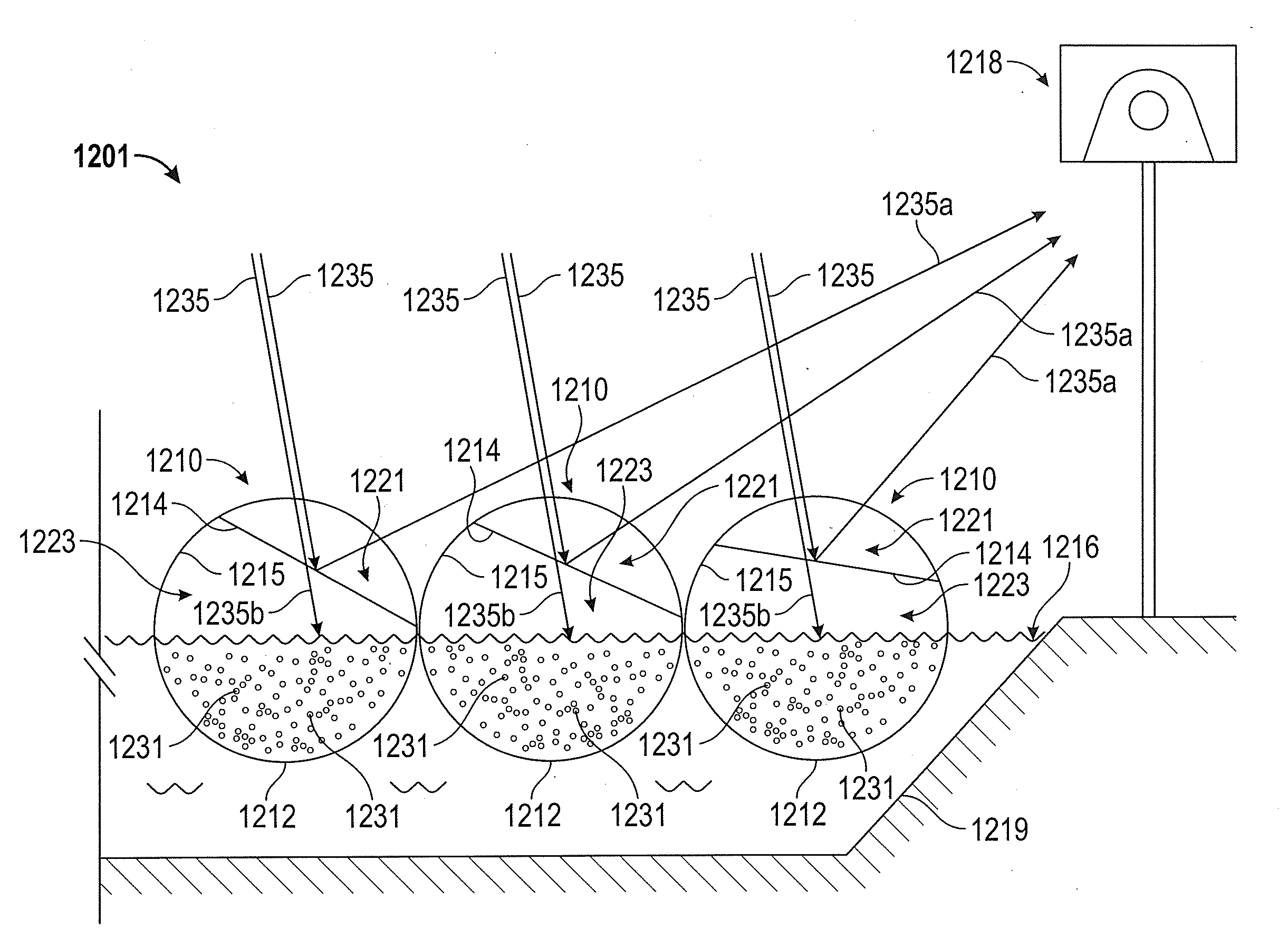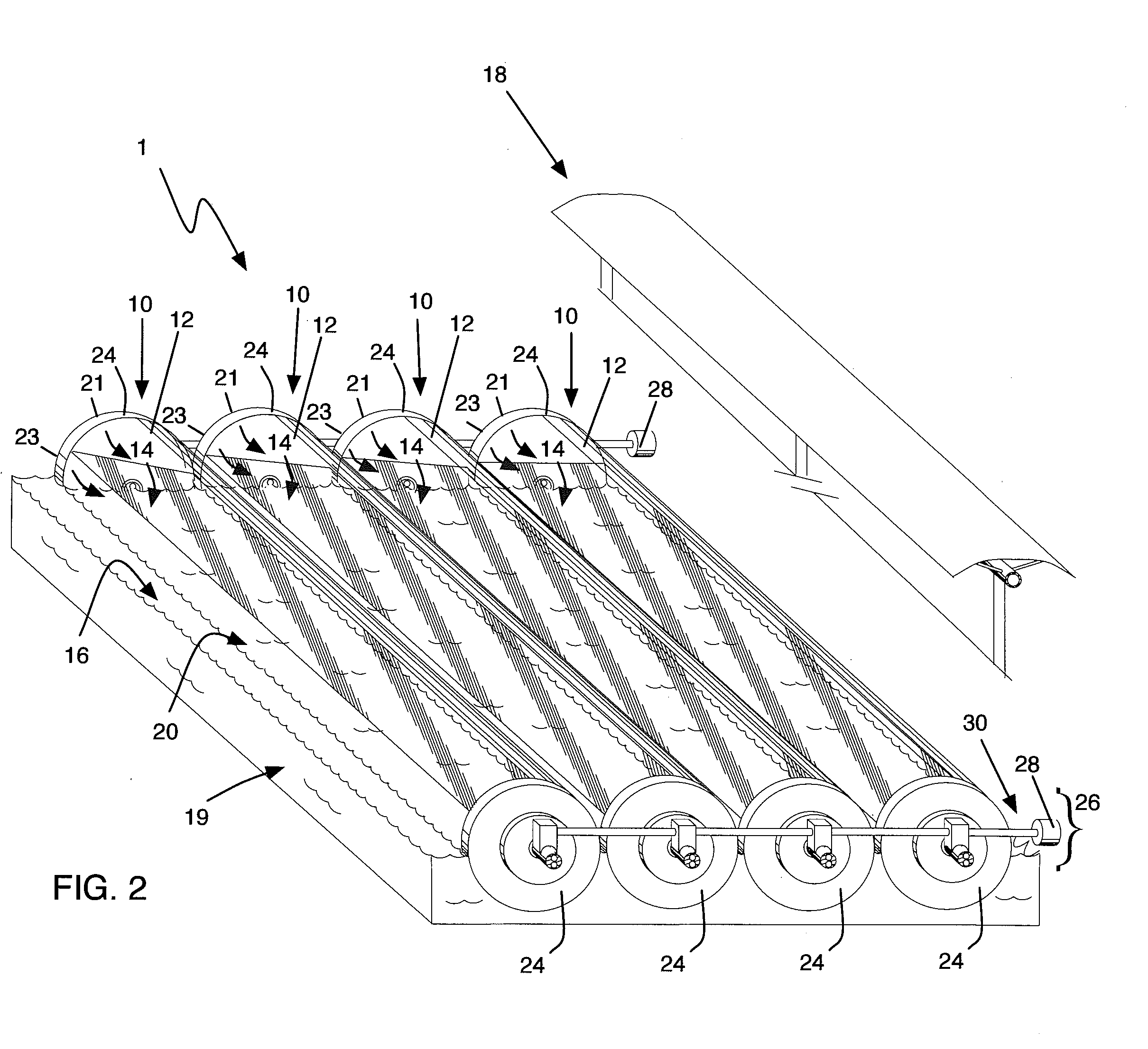Systems and methods of generating energy from solar radiation using photocatalytic particles
- Summary
- Abstract
- Description
- Claims
- Application Information
AI Technical Summary
Benefits of technology
Problems solved by technology
Method used
Image
Examples
Embodiment Construction
[0066]With reference now to the drawings, and particularly FIGS. 1 and 2, there is shown an array 1 of solar reflector assemblies 10. Each solar reflector includes an inflated elongated tube 12 having a reflective sheet 14 coupled along opposed sides of the sheet to a wall of the tube. In exemplary embodiments, reflective sheet 14 is coupled to an interior wall 15 of the elongated tube 12 so that the reflective sheet 14 divides the elongated tube 12 into two portions, an upper portion or chamber 21 and a lower ballast portion or chamber 23.
[0067]More particularly, in exemplary embodiments the elongated tube 12 is a unitary structure that includes lower ballast portion 23, which provides ballast for the solar reflector assembly 10. In other words, lower ballast portion 23 is the lower section of the elongated tube itself and, as such, is integrally formed with the elongated tube 12. This structure is advantageous because it obviates the need for additional components or structural el...
PUM
 Login to View More
Login to View More Abstract
Description
Claims
Application Information
 Login to View More
Login to View More - R&D
- Intellectual Property
- Life Sciences
- Materials
- Tech Scout
- Unparalleled Data Quality
- Higher Quality Content
- 60% Fewer Hallucinations
Browse by: Latest US Patents, China's latest patents, Technical Efficacy Thesaurus, Application Domain, Technology Topic, Popular Technical Reports.
© 2025 PatSnap. All rights reserved.Legal|Privacy policy|Modern Slavery Act Transparency Statement|Sitemap|About US| Contact US: help@patsnap.com



